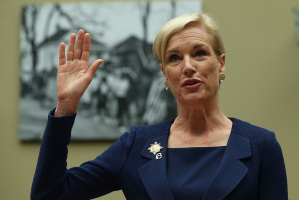Broken Genome Promises
Identifying the Weak
Ten years ago, then-president Clinton told Americans that mapping the human genome would "revolutionize the diagnosis, prevention and treatment of most, if not all, human diseases."
But as the New York Times reported recently, a decade after the mapping of the human genome, the "genetic map [has yielded] few new cures."
The primary goal of the project-discovering the "genetic roots of common disease" and then finding cures-"remains elusive." In fact, the Times reports, "geneticists are almost back to square one in knowing where to look for the roots of common disease."
Unfortunately, there's more to this story than yet another case of failing to live up to the scientists' hype. That's because while genetics' potential to heal may be almost back to square one, the same can't be said for its potential to harm.
Genomics may not be able to cure illnesses, but it can prevent illnesses by identifying those in utero who are genetically at risk.
Take the recent announcement that scientists had "uncovered dozens of previously unknown genetic mutations that contribute to autism in children."
Notwithstanding what you may have heard, these findings bring us no closer to "curing" autism. On the contrary, the study shows how difficult it will be to "design drug therapies that work across a wide range of autistic spectrum disorders."
Now it doesn't take a genetics scientist to figure out the road we're heading down. If we can identify fetuses who carry genetic markers for autism, but we can't find a cure for them, what's likely to happen? We'll see an increase in abortions. Exactly what happened to people with Down syndrome-92 percent of whom now, after prenatal diagnosis, follow with an abortion.
There is no reason to believe that prenatal diagnoses of autism, or even a predisposition to autism, would be all that different. Prospective parents of children with less-challenging genetic prognoses abort their unborn children in a majority of the cases.
Raising an autistic child-whose dependence may extend beyond the age of 18 and whose needs can exhaust even the most dedicated and loving parent-is a scary prospect.
As I've also discovered, however, with my grandson Max, it can be a huge blessing.
Now this doesn' t take into account expense. We know that keeping medical costs down right now is a national priority. So it's easy to understand why parents are strongly encouraged to undergo genetic screening. The least-expensive way to care for people with special needs is to prevent them from being born. So the pressure will mount on parents to abort babies with genetic issues.
If this sounds familiar, that's because it was the "near future" depicted in the film Gattaca. That came out three years before Clinton's announcement. Film director Andrew Niccol saw where our brave new world of genetic screening would lead. A tool to enhance human life could end up becoming a tool to eliminate it.
Folks, it comes down simply to this. Human life is either sacred, made in the image of God, and therefore worthy of our protection in all circumstances, or it is merely the result of chance, an accumulation of genetic material to be manipulated-or even eliminated-according to the dictates of science and the bottom line.
There is no in-between.




























